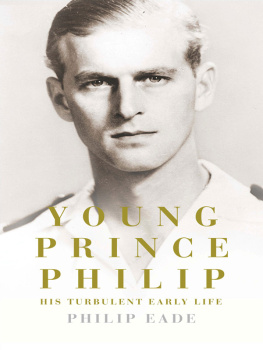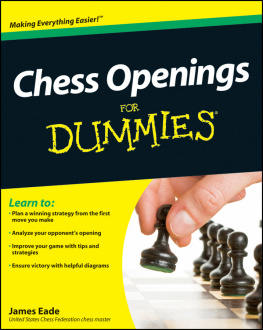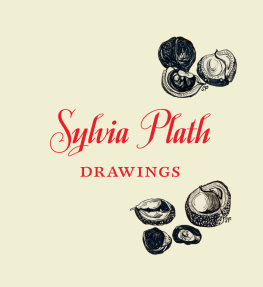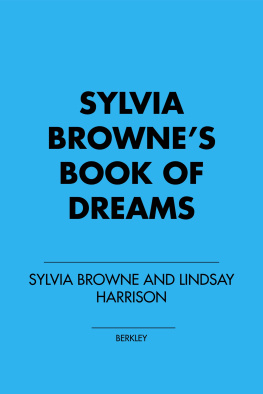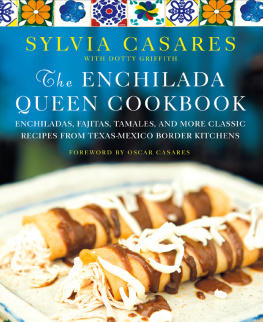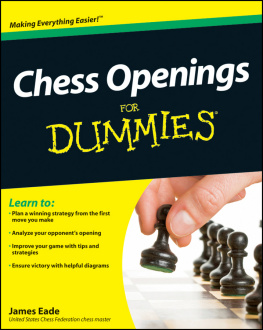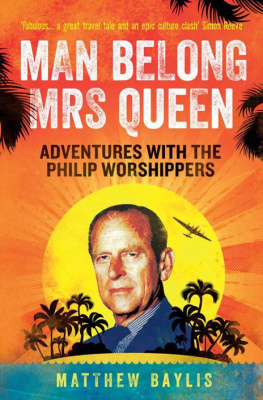Philip Eade - Sylvia, Queen of the Headhunters
Here you can read online Philip Eade - Sylvia, Queen of the Headhunters full text of the book (entire story) in english for free. Download pdf and epub, get meaning, cover and reviews about this ebook. year: 2014, publisher: Picador, genre: Non-fiction. Description of the work, (preface) as well as reviews are available. Best literature library LitArk.com created for fans of good reading and offers a wide selection of genres:
Romance novel
Science fiction
Adventure
Detective
Science
History
Home and family
Prose
Art
Politics
Computer
Non-fiction
Religion
Business
Children
Humor
Choose a favorite category and find really read worthwhile books. Enjoy immersion in the world of imagination, feel the emotions of the characters or learn something new for yourself, make an fascinating discovery.

- Book:Sylvia, Queen of the Headhunters
- Author:
- Publisher:Picador
- Genre:
- Year:2014
- Rating:5 / 5
- Favourites:Add to favourites
- Your mark:
- 100
- 1
- 2
- 3
- 4
- 5
Sylvia, Queen of the Headhunters: summary, description and annotation
We offer to read an annotation, description, summary or preface (depends on what the author of the book "Sylvia, Queen of the Headhunters" wrote himself). If you haven't found the necessary information about the book — write in the comments, we will try to find it.
Sylvia, Queen of the Headhunters — read online for free the complete book (whole text) full work
Below is the text of the book, divided by pages. System saving the place of the last page read, allows you to conveniently read the book "Sylvia, Queen of the Headhunters" online for free, without having to search again every time where you left off. Put a bookmark, and you can go to the page where you finished reading at any time.
Font size:
Interval:
Bookmark:
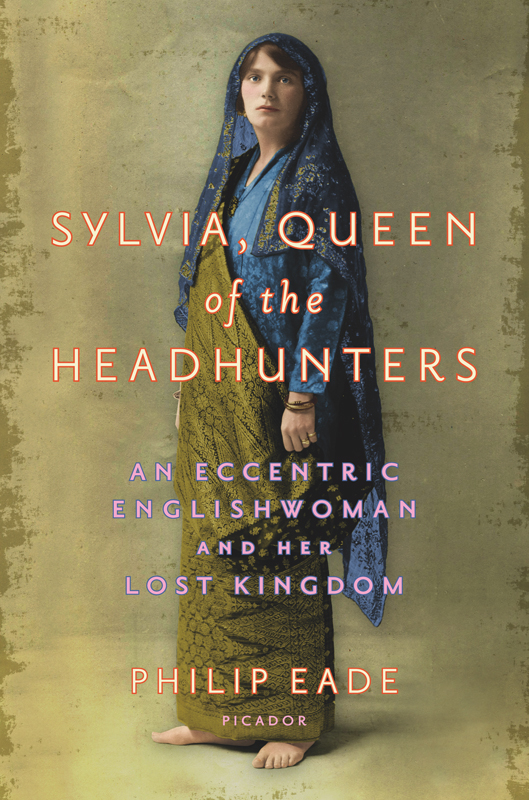

The author and publisher have provided this e-book to you for your personal use only. You may not make this e-book publicly available in any way. Copyright infringement is against the law. If you believe the copy of this e-book you are reading infringes on the authors copyright, please notify the publisher at: us.macmillanusa.com/piracy.
For my mother and father
CONTENTS
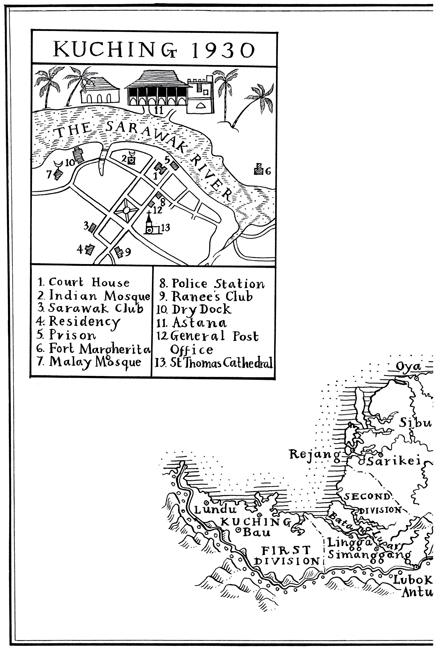
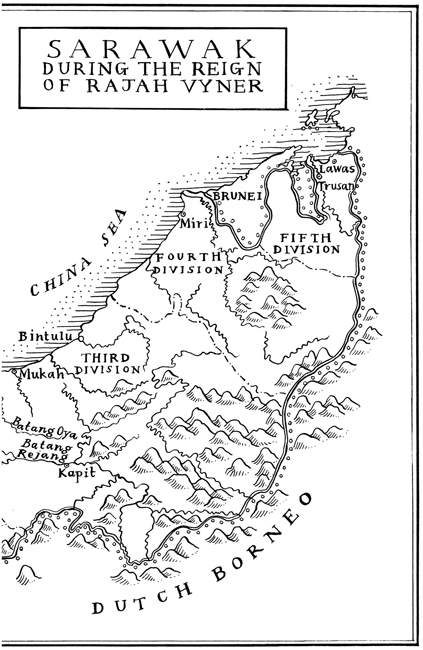
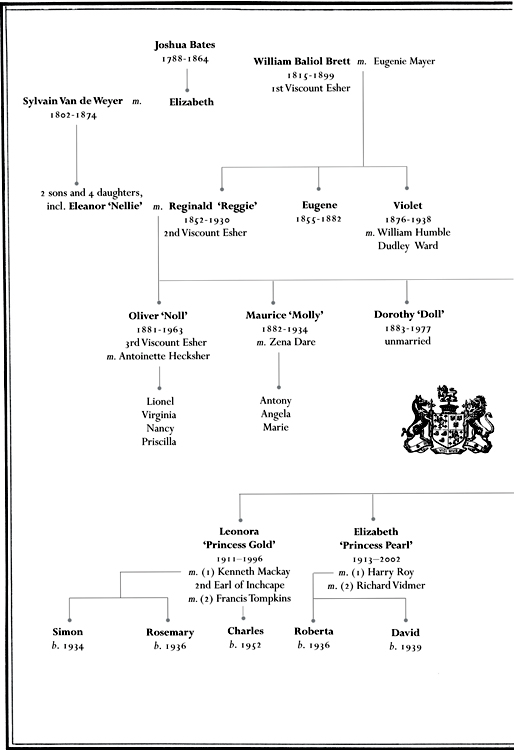
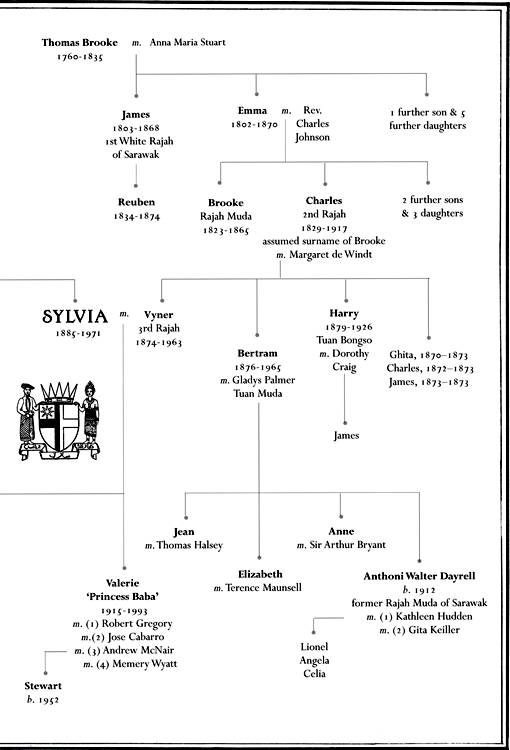
PREFACE
Two years after this book was first published in Britain, I travelled to Sarawaks neighbour, Brunei, the ancient sultanate that once extended across the greater part of northern Borneo and as far as the Philippines, before being steadily whittled away and eventually, in the late nineteenth century, relinquishing most of its remaining territory to Sarawaks White Rajahs.
It was my first time in this now tiny, oil-doused country, and the contemplation of the Sultans extraordinary gold-domed palace (1,778 rooms, 14 acres of Italian marble, 51,490 light bulbs) brought to mind one of the more puzzling questions about the White Rajahs: how was it that the last Rajah, Sylvias husband, contrived to leave so little when he died in 1963?
Sir Vyner Brooke had, after all, been absolute monarch of a kingdom the size of England, twenty-five times the size of Brunei, and similarly rich in natural resources, including oil. Yet he bequeathed to Sylvia and their daughters a paltry 22,000roughly 332,500 in todays money. His grandchildren now have almost nothing to show for that which Rajah Vyner ceded to the British Crown in 1946.
The Sultan of Brunei, by contrast, was widely deemed the richest man in the world during the 1970s and 1980sand this despite his ancestors having sold the vast majority of their country to the Brookes in harder times. In 1904, Bruneis poverty was such that a visiting British consul met the then-Sultan, who was in considerable discomfort, having recently fallen through the rotten floor of his stilted longhouse onto some palm stumps below.
The discovery of vast oil and gas reserves early in the last century changed everything. But while Bruneis discoveries were more spectacular than those in Sarawak, the discrepancy does not begin to explain the subsequent vast disparities in their respective rulers wealth. For all his eccentricities, Rajah Vyner must rank as one of the least acquisitive absolute rulers of all time.
Just as striking as the Brunei comparison is that with Sarawaks incumbent chief minister, Abdul Taib Mahmud, who has held the post since 1981 and is conservatively said to now be worth $15 billionslightly less than the Sultan of Bruneimuch of it apparently stemming from Sarawaks rain forest. During his time in power, Sarawak has lost more than 90 percent of its primary forests to logging and has the dubious distinction of the fastest rate of deforestation in Asia. Ironically known as the white-haired Rajah, Mr Mahmud has regularly denied accusations of corruption. In July 2013, one of his most vocal critics, Sarawak-born investigative journalist and activist Clare Rewcastle Brown, sister-in-law of the former British prime minister Gordon Brown, was refused entry to Sarawak after being placed on a not to land list.
Whatever one might think of the conduct of the last Rajah and Ranee of Sarawak in the dying days of the Brooke Raj, no one can accuse them of having plundered their country, financially or environmentally or otherwise. A lot of what has happened there since their departure might even be seen as vindicating the anticession campaign fought by the Rajahs nephew and thwarted heir, Anthony Brooke, in the late 1940s.
Anthony Brooke, as we shall see, was among the first to raise the alarm about the rate of deforestation in Sarawak. Still active with various campaigns when this book first came out, he lived on at his home in New Zealand until 2011, when he died at age ninety-eight.
In addition to his having been deprived of his inheritance and being subjected to the British-imposed ban on his entering Sarawak, which was never formally lifted, the former Rajah Muda also had to endure a lingering cloud of suspicion concerning his supposed involvement in the plot to assassinate the British governor of Sarawak, Duncan Stewart, in 1949.
In 2012, however, a letter was found from one conspirator to another, making it clear that their objective, far from assisting the campaign for the reinstatement of the Brooke Raj, had been to facilitate an Indonesian takeover of the country. Additional correspondence shows that the British colonial office knew full well that Anthony Brooke had had nothing to do with Stewarts assassination, but that they deliberately chose not to tell him or anyone else this for fear of sparking an unwelcome conflict with Indonesia. While these revelations will give some satisfaction to descendants of the ill-treated Anthony Brooke, he himself had the misfortune to die the year before they came to light.
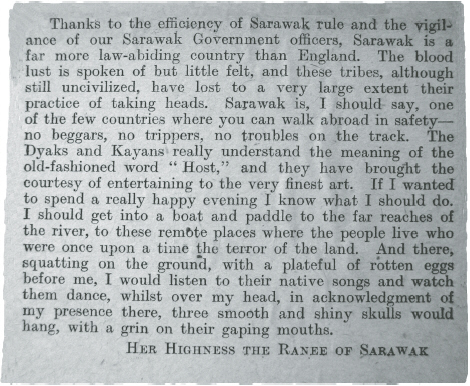
AUTHORS NOTE
I am grateful to everyone who has helped me in various ways with the researching and writing of this book even the esteemed historian who kindly wished me good luck but said he could think of nothing to contribute on the wretched Sylvia Brooke or her husband and admitted to being baffled as to why I should want to write about that seedy pair. Luckily I was by then too far in to turn back, and almost convinced myself to be encouraged.
The idea sprang from a telephone call in 2002 to the obituaries desk of the Daily Telegraph, where I then worked, from Stewart McNair, the son of Valerie, the wildest of Ranee Sylvias three daughters, known by the popular press as Princess Baba. Mr McNair himself a headhunter, appropriately enough, albeit of the corporate kind suggested that we might like to run an obituary of his aunt Elizabeth, Princess Pearl, and it was while cobbling together a piece for our page that I was drawn further in to the curious story of the Brooke family. I would like to thank him for taking the trouble to call us and for all his subsequent help.
I would also like to thank my literary agent Caroline Dawnay, for all her brilliant advice and reassuring certainty that a book centred on the racy Ranee would work, and my charming and incisive publisher Alan Samson, at Weidenfeld & Nicolson.
I owe an especially heavy debt to Professor R. H. W. Reece. During the 1970s he was responsible for assembling many of the papers in the vast Brooke archive at Rhodes House in Oxford, and for interviewing many of Rajah Vyners officers before they died, incorporating their recollections in such carefully researched books as The Name of Brooke and Masa Jepun, which have been invaluable references for me. In 2004, while on a research trip to Sarawak, I visited Bob Reece at his home town of Perth, in Western Australia, and he has been more than generous in sharing information, insights and contacts, and most recently reading and commenting on my manuscript. I also went to see another renowned Brooke expert, Professor Nicholas Tarling, at Auckland University, who has been equally helpful.
Font size:
Interval:
Bookmark:
Similar books «Sylvia, Queen of the Headhunters»
Look at similar books to Sylvia, Queen of the Headhunters. We have selected literature similar in name and meaning in the hope of providing readers with more options to find new, interesting, not yet read works.
Discussion, reviews of the book Sylvia, Queen of the Headhunters and just readers' own opinions. Leave your comments, write what you think about the work, its meaning or the main characters. Specify what exactly you liked and what you didn't like, and why you think so.


